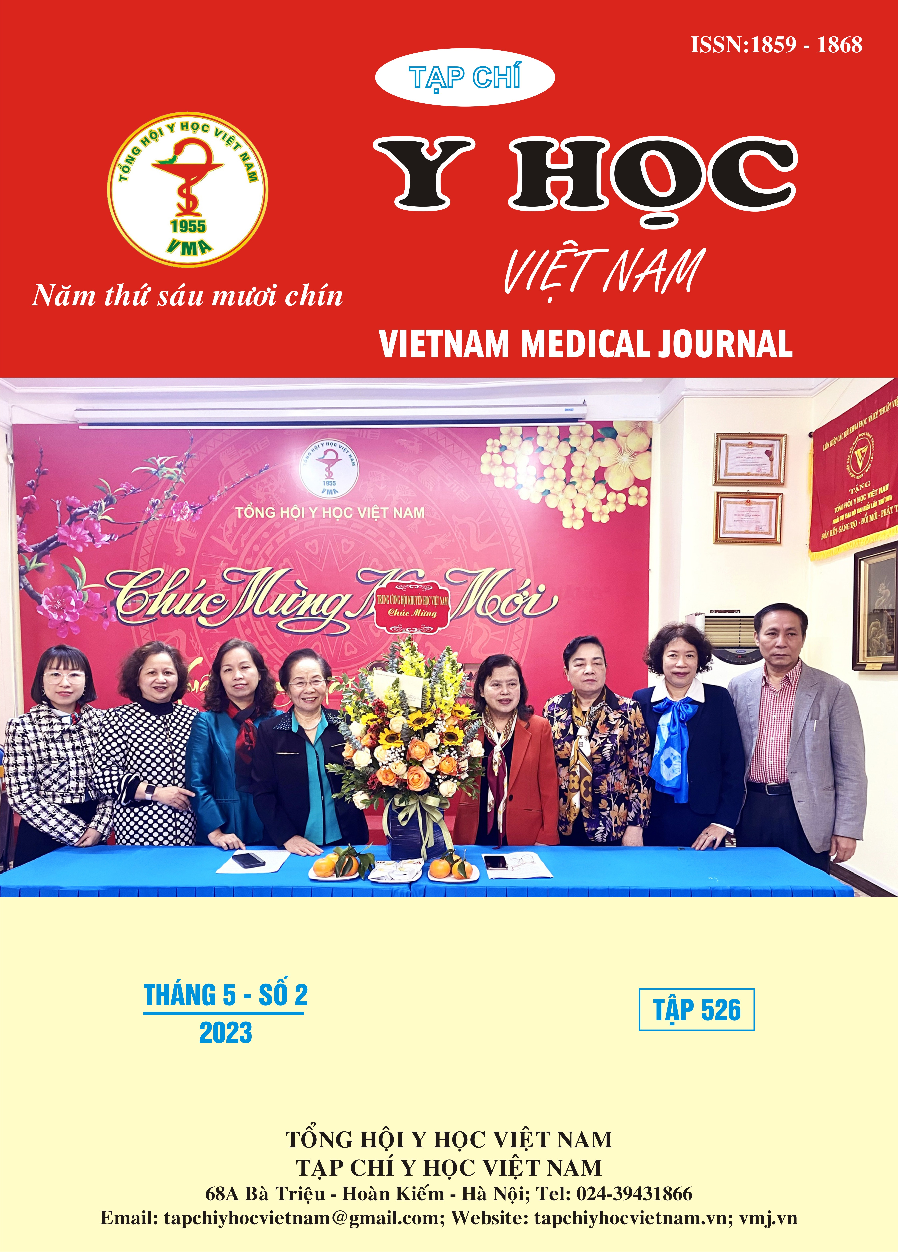CURRENT STATUS OF POST-PARTUM DEPRESSION AMONG PREGNANT WOMEN IN THE NATIONAL HOSPITAL OF OBSTETRICS AND GYNECOLOGY
Main Article Content
Abstract
Objectives: To describe the characteristics of postpartum depression according to the EPDS scale of pregnant women who give birth at the National Hospital of Obstetrics and Gynecology. Methodology: This is a descriptive study on 550 pregnant women giving birth at the National Hospital of Obstetrics and Gynecology in 2020-2021. Results: The rate of postpartum depression accounted for 7.6%. The symptoms of postpartum depression are divided into 3 major groups: low mood, decreased interest and pleasure, decreased energy, increased fatigue. In which, “Feeling very bored/depressed, moody” accounted for the largest percentage with 83.3%. “No longer interested in meeting or meeting with anyone” accounted for 40.5%. “Feeling tired all the time” accounted for 76.2%. Common symptoms account for a large proportion such as “sleep disorder” at 100.0%, “Eatingdisorder” (97.6%), “The idea of being guilty, not worthy (80.9%)". Conclusion: Postpartum depression still accounts for a certain proportion in the population. Most feel bored/depressed, moody. Common symptoms of postpartum depression account for a very high rate such as sleep disturbances and eating disorders.
Article Details
Keywords
Postpartum depression, pregnant women, National Hospital of Obstetrics and Gynecology.
References
2. Huỳnh Thị Duy Hương. Trầm cảm sau sinh và các yếu tố ảnh hưởng trên những phụ nữ đến sinh tại bệnh viện Đại học Y dược Tp Hồ Chí Minh. Tạp chí y học Tp Hồ Chí Minh. 2005;1(9)
3. Đặng Thị Thùy Mỹ. Dấu hiệu trầm cảm sau sinh của các bà mẹ tại Bệnh viện Sản nhi Trà Vinh năm 2018. Tạp chí Y học Thành phố Hồ Chí Minh. 2018;5(4)
4. Nguyễn Hoài Thảo Tâm. Trầm cảm sau sinh và các yếu tố liên quan ở phụ nữ sau sinh trong vòng 6 tháng tại huyện Trảng Bom, tỉnh Đồng Nai. Tạp chí Y học Thành phố Hồ Chí Minh 2019;5(8)
5. Klainin P, Arthur DG. Postpartum depression in Asian cultures: a literature review. Int J Nurs Stud. Oct 2009;46(10):1355-73. doi: 10.1016/ j.ijnurstu.2009.02.012
6. Upadhyay RP, Chowdhury R, Aslyeh S, et al. Postpartum depression in India: a systematic review and meta-analysis. Bull World Health Organ. Oct 1 2017;95(10):706-717c. doi: 10.2471/blt.17.192237
7. Pham D, Cormick G, Amyx MM, et al. Factors associated with postpartum depression in women from low socioeconomic level in Argentina: A hierarchical model approach. Journal of affective disorders. 2018;227:731-738.
8. Nguyễn Thị Huyền. Nghiên cứu đặc điểm lâm sàng rối loạn trầm cảm sau sinh. Luận án chuyên khoa cấp II, Trường Đại học Y Hà Nội. 2014;


